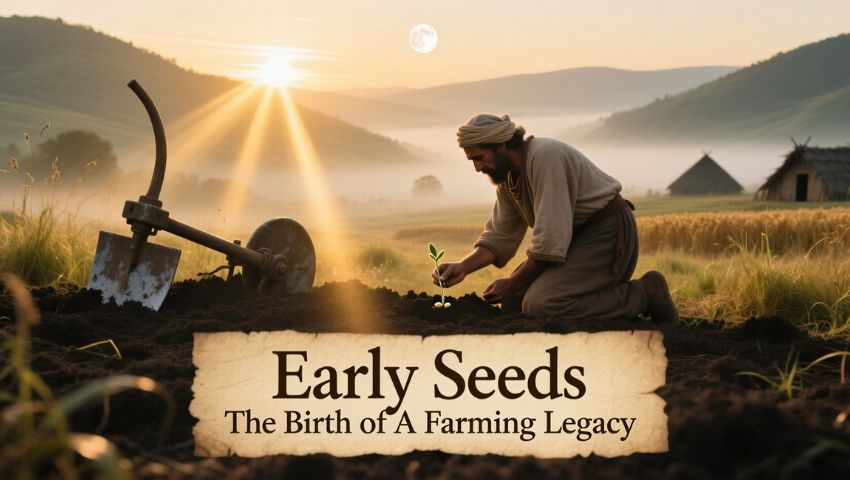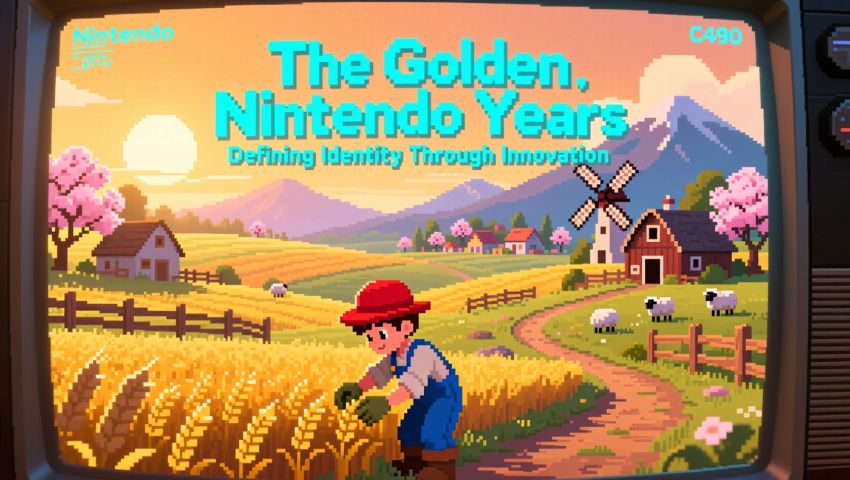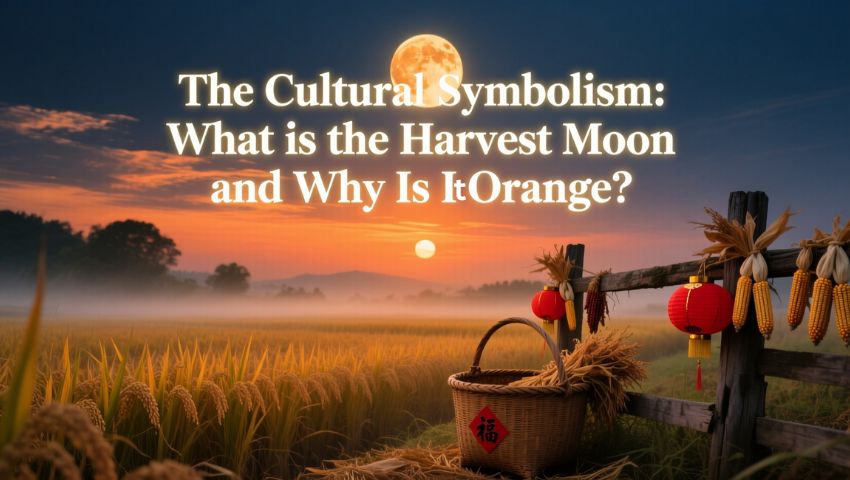When people talk about legendary gaming franchises the conversation often turns to big names like The Legend of Zelda Final Fantasy or Super Mario. Yet somewhere in the shadows a quiet and humble series was cultivating something entirely different: a sense of peace routine and emotional connection. This is the History of Harvest Moon From Farming Sim to Story of Seasons, a journey that spans decades, corporate splits, fan confusion and a surprising cultural legacy that went on to inspire global hits like Stardew Valley.
Most new fans are surprised to learn that the Harvest Moon they see on store shelves today is not the same as the one from their childhood. The original franchise split, creating Western branding confusion. This left players unsure about what Harvest Moon is today and why Story of Seasons exists. To understand this, we must go back to the beginning, to the first seeds planted on the Super Nintendo Entertainment System in 1996.
The story of Harvest Moon is more than just farming simulation. It is about building connections, experiencing the passage of time and creating a virtual life that feels meaningful. From watering crops and raising livestock to forming relationships and watching children grow, the series offered depth and emotional engagement. This set it apart from other games of its era. Exploring this history helps explain how the franchise evolved into Story of Seasons, continuing to captivate both new and longtime fans.
Quick Info
| Game Title | Release Year | Platform(s) | Notable Features |
|---|---|---|---|
| Harvest Moon (SNES) | 1996 | Super Nintendo | First game; farming, livestock, relationship-building |
| Harvest Moon GB / GBC | 1997 | Game Boy / Game Boy Color | Portable entry; time management, crop raising |
| Harvest Moon: Back to Nature | 2000 | PlayStation | Expanded graphics; gender options; first non-Nintendo console release |
| Harvest Moon 64 | 1999 | Nintendo 64 | 3D gameplay; descendants of original characters |
| Harvest Moon: Friends of Mineral Town | 2003 | Game Boy Advance | Rival marriage candidates; portable gameplay; later became Story of Seasons version |
| Harvest Moon: More Friends of Mineral Town | 2005 | Game Boy Advance | Female protagonist version |
| Harvest Moon: A Wonderful Life | 2004 | GameCube | Aging, time progression, children, life simulation |
| Harvest Moon: Magical Melody | 2006 | GameCube / Wii | Pets, wild animals, mission-based gameplay |
| Harvest Moon DS / DS Cute | 2006–2008 | Nintendo DS | Portable farming; village continuity from A Wonderful Life |
| Harvest Moon: Tree of Tranquility | 2008 | Wii | New livestock (goats, ostriches); Harvest Goddess quest |
| Harvest Moon: Animal Parade | 2009 | Wii | Sequel to Tree of Tranquility; ride livestock; two children system |
| Harvest Moon: Grand Bazaar | 2010 | Nintendo DS | Focus on selling crops and produce at markets |
| Harvest Moon: Hero of Leaf Valley | 2010 | PSP | Return of Save the Homeland protagonist; farm preservation plot |
| Harvest Moon: The Tale of Two Towns | 2011 | Nintendo DS / 3DS | Two villages at war; Japanese-style village |
| Harvest Moon: A New Beginning | 2012 | Nintendo 3DS | Major gameplay changes; enhanced customization |
| Harvest Moon: One World | 2021 | Switch / PS4 | Open-world exploration; new regions; modern farming mechanics |
| Harvest Moon: The Winds of Anthos | 2023 | Steam / Consoles | Mobile farm; open-world map; quality-of-life improvements |
| Story of Seasons: Friends of Mineral Town (Remake) | 2020 | Switch / PC | Remake of classic GBA game under Story of Seasons branding |
| Story of Seasons: A Wonderful Life (Remake) | 2023 | Switch | Modern remake of GameCube classic |
Early Seeds The Birth of a Farming Legacy

The very first game known in Japan as Bokujō Monogatari was released in 1996. It was developed by Yasuhiro Wada who envisioned something radically different from the combat heavy games of the era. He was inspired by childhood memories of rural life and a longing for peace away from urban noise. This led him to create a game about farming, relationships, and quiet routines. When it came to the West, publisher Natsume localized it under the new name Harvest Moon. This title eventually became iconic across North America and Europe.
The Japanese original was published by Marvelous (formerly Victor Interactive Software). However, because Natsume handled the Western release, they owned the Western brand name. This detail became very important later and directly led to the branding split that still confuses many players today.
The original Harvest Moon on the SNES was unlike anything gamers had ever experienced. There were no battles, no invading demons, no kings to overthrow, just a rundown plot of land, a bag of seeds and the freedom to build a life. Players had to manage stamina seasons, relationships with townsfolk and choose someone to marry. Time passed as they worked making every decision meaningful. It felt alive because for the first time a game simulated not just tasks but daily life.
Following the success of the SNES version Harvest Moon GB and later Harvest Moon GBC brought the experience to handheld systems surprising many with how well the peaceful farming formula translated to portable play. Despite the hardware limitations the feeling of waking up each morning to water crops had an addicting rhythm that hooked players permanently.
Expansion Era Harvest Moon Grows Beyond Nintendo
The late 1990s and early 2000s were formative years. Harvest Moon 64 which was released in 1999 remains a fan favorite to this day. The shift into 3D graphics gave the franchise personality and players formed attachments to villagers like Karen Elli and Ann. This version pioneered deeper social mechanics and offered more meaningful festivals and community events.
Shortly after Harvest Moon, Back to Nature brought the series to the PlayStation, marking the first time the franchise left Nintendo hardware. This PlayStation version was so popular that it spawned multiple remakes and gender variants including Harvest Moon: Boy & Girl and the female protagonist edition known as Harvest Moon Back to Nature for Girl.
During this era something important was happening behind the scenes: the developers were exploring how personal storytelling and multiple life paths could create emotional immersion. Fans were no longer just farming, they were building a legacy. Many players have personal anecdotes about naming their farm after a childhood pet or spending countless evenings trying to get their chosen love interest to accept a Blue Feather, a small in-game item symbolizing marriage.
Rise of a Cult Classic Why People Fell in Love
Unlike other simulation titles Harvest Moon did not reward players with high scores or action moments. Instead it rewarded consistency, kindness and slow progress. Something about shipping milk every morning or attending the Egg Festival connected deeply with players. It was a reminder that growth doesn’t always happen through flashy victories but through quiet dedication.
This emotional connection birthed communities fan forums, mod discussions and deep analysis threads still active today on platforms like Reddit particularly in discussions such as History of Harvest Moon Reddit analysis threads where players trace their personal farming journeys like family histories. Players remember which game they played during their school years, who they married and which festivals they never missed. No other franchise made something as simple as feeding virtual cows feel like a sacred ritual.
The Golden Nintendo Years Defining Identity Through Innovation

During the Game Boy Advance and Nintendo DS era Harvest Moon became strongly tied to Nintendo platforms. Games like Friends of Mineral Town and More Friends of Mineral Town added features such as rival marriage candidates introducing a light sense of competition in relationships.
On the GameCube Harvest Moon A Wonderful Life stood out for its emotional depth. Instead of just farming players experienced aging, changing towns and children who developed personalities based on how they were raised. For many this was the first farming sim that made choices feel permanent.
Key emotional elements included:
- Characters and towns evolving over time
- Children developing different futures based on your actions
- A visible sense of aging and consequence
Later titles like Magical Melody Harvest Moon DS and Tree of Tranquility on the Wii helped secure the series’ identity. During this time Harvest Moon was frequently showcased alongside Animal Crossing marking its peak recognition in Nintendo’s life simulation category.
The Branding Split When Harvest Moon Became Story of Seasons
The central turning point in the History of Harvest Moon From Farming Sim to Story of Seasons occurred in 2014. The developers at Marvelous decided to begin publishing their games in the West directly through their U.S. branch XSEED Games. However there was a complication: Natsume still owned the rights to the name Harvest Moon in Western regions.
This led to a split that still confuses players:
- Marvelous continued making the original Bokujō Monogatari games but due to licensing released them under a new name: Story of Seasons.
- Natsume holding onto the name Harvest Moon began developing entirely new farming games unrelated to the original series starting with titles like Harvest Moon: The Lost Valley and later Harvest Moon One World.
In short, is the Story of Seasons Harvest Moon? Officially yes, Story of Seasons is the continuation of the original Japanese franchise. Meanwhile the newer Harvest Moon games developed by Natsume are separate and not part of the original continuity.
For long time fans this was frustrating. Many bought new Harvest Moon titles thinking they were part of the franchise they loved. They soon found the gameplay and depth were different. Meanwhile, Story of Seasons games rose, bringing back the original mechanics and emotional design.
Harvest Moon vs Story of Seasons Understanding the Difference
To answer the modern fan question Harvest Moon vs Story of Seasons, which is the real successor? The answer lies in development lineage. Story of Seasons is made by the original creators from Marvelous preserving mechanics, art style and emotional world design. Meanwhile Harvest Moon by Natsume carries the brand name but features a different gameplay philosophy often more simplified or experimental.
This branding confusion also extends to discussions like why is Harvest Moon Story of Seasons now which is answered simply by licensing law rather than in-game lore. Even modern comparisons like Harvest Moon The Winds of Anthos vs Story of Seasons reveal this divide. Harvest Moon The Winds of Anthos released by Natsume presents new mechanics and world building but is distinct from the ongoing Story of Seasons titles rooted in the original Japanese design blueprint.
The Influence on Indie Games Story of Seasons vs Stardew Valley
When analyzing Story of Seasons vs Stardew Valley it’s impossible to deny the impact of the former on the latter. Stardew Valley created by a single developer Eric Barone openly credits Harvest Moon as his inspiration. He wanted to recapture the spirit of the classic Harvest Moon Friends of Mineral Town and Harvest Moon 64 era but introduce deeper character backstories and modern quality of life mechanics.
Ironically Stardew Valley’s success reignited global interest in farming sims which led many players to discover both Story of Seasons remakes and the ongoing Harvest Moon brand. Even players who wonder what is the best Story of Seasons game often find themselves comparing it to Stardew Valley. For newcomers Story of Seasons Switch editions have become entry points into the original lineage.
Modern Confusion Players Asking “Is the Story of Seasons Harvest Moon?”
Many players, especially younger fans who missed the original SNES and N64 eras often ask is Story of Seasons Harvest Moon. The answer is yes all original Harvest Moon games released before 2014 are now considered part of the Story of Seasons franchise line. Everything labeled Harvest Moon after that date is a separate branch under Natsume’s creation.
Discussions on History of Harvest Moon Reddit communities reveal that this confusion often leads to purchase regret. Some players buy modern Harvest Moon games expecting the same depth and narrative heart as the older titles but end up preferring Story of Seasons releases instead.
This is why when choosing which games to buy today it’s advised to follow the Story of Seasons title line if you want the original experience and to explore modern Harvest Moon games if you are interested in alternative interpretations under the same branding banner.
The Cultural Symbolism: What is the Harvest Moon and Why Is It Orange?

Outside of gaming even the phrase what is the harvest moon carries significance. The History of Harvest Moon in real world terms refers to the full moon closest to the autumn equinox famously appearing larger and more orange due to atmospheric scattering. Many players associate this imagery of a glowing orange moon above fields ready for harvest with the comforting tone of the series. People even ask why they harvest moon orange connecting natural beauty to gaming nostalgia.
Knowing when is the Harvest Moon 2025 or following lunar calendars has become a trend for fans who enjoy celebrating the series by syncing their real life farming routines or cozy gaming sessions with the atmospheric feel of the harvest season.
Franchise Timeline Harvest Moon Games in Order
Understanding the Harvest Moon games in order helps players trace the emotional and gameplay evolution. The SNES N64 GBC PS1 and GameCube eras defined identity. The DS and Wii years expanded mechanics. Then came 2014 the split between Harvest Moon under Natsume and Story of Seasons under Marvelous/XSEED. Following this order is key to appreciating how farming simulation grew from niche curiosity to beloved genre.
Recognizing the Best Harvest Moon and Best Story of Seasons Games
When discussing the best Harvest Moon games, older titles stand out for their emotional impact and traditional mechanics. These include Harvest Moon, A Wonderful Life, Harvest Moon 64, and Friends of Mineral Town. Fans seeking the best Story of Seasons game often recommend the remake of Friends of Mineral Town. Others suggest Pioneers of Olive Town. The choice depends on whether you prefer nostalgia or modern enhancements.
For Switch owners, Story of Seasons collections provide a great entry point. They offer polished versions of classic mechanics with improved interfaces. These games are easy to recommend to newcomers who want to build their farming legacy confidently.
The Modern Era: Harvest Moon: One World and Harvest Moon: The Winds of Anthos
In recent years, titles like Harvest Moon: One World and Harvest Moon: The Winds of Anthos have tried to redefine the Natsume-led branch. These games introduce features such as traveling across multiple regions and interacting with different cultural zones. This expands beyond the classic town-based farming. Buyers should understand that, while these games carry the Harvest Moon name. They are separate from the Story of Seasons, which continues the original Japanese concept.
Comparing Harvest Moon The Winds of Anthos vs Story of Seasons highlights the difference clearly: one is experimental under the branded name while the other is rooted in traditional farm life simulation heritage.
Emotional Legacy Why This Series Matters
Many players still remember their first harvest, their first in-game wedding or that moment. When they forgot to feed their cow and felt genuine guilt. No other series made such simple choices feel meaningful. In a world of high intensity gaming the History of Harvest Moon From Farming Sim to Story of Seasons proves that quiet games with emotional grounding can change gaming culture.
Fans who grew up with Harvest Moon now introduce Story of Seasons to new players creating generational bonds. Some even keep old strategy notebooks from the 90s filled with crop schedules and festival dates. This storytelling passed down like a family tradition proves that this series is more than code. It is memory nostalgia and connection.
Conclusion
The history of Harvest Moon is more than just a timeline of farming games. It is a story of emotional connection and peaceful creativity. The franchise grew into something greater through Story of Seasons. From its SNES roots to modern reimaginings, the series shows that quiet games with heart can leave a lasting legacy across generations.
As fans continue to explore both Harvest Moon and Story of Seasons, understanding their origins allows them to appreciate the true soul of the franchise. Knowing the real history of Harvest Moon helps new and old players alike choose their games with confidence and continue the legacy of cozy farming life one harvest at a time.

Emily Whittle is a passionate gamer and blogger, sharing honest reviews, guides, and tips through Top Cozy Games. With years of gaming experience, she helps players discover cozy, fun, and exciting titles. Her mission is to create a trusted space where gamers can find reliable insights and enjoy their gaming journey.